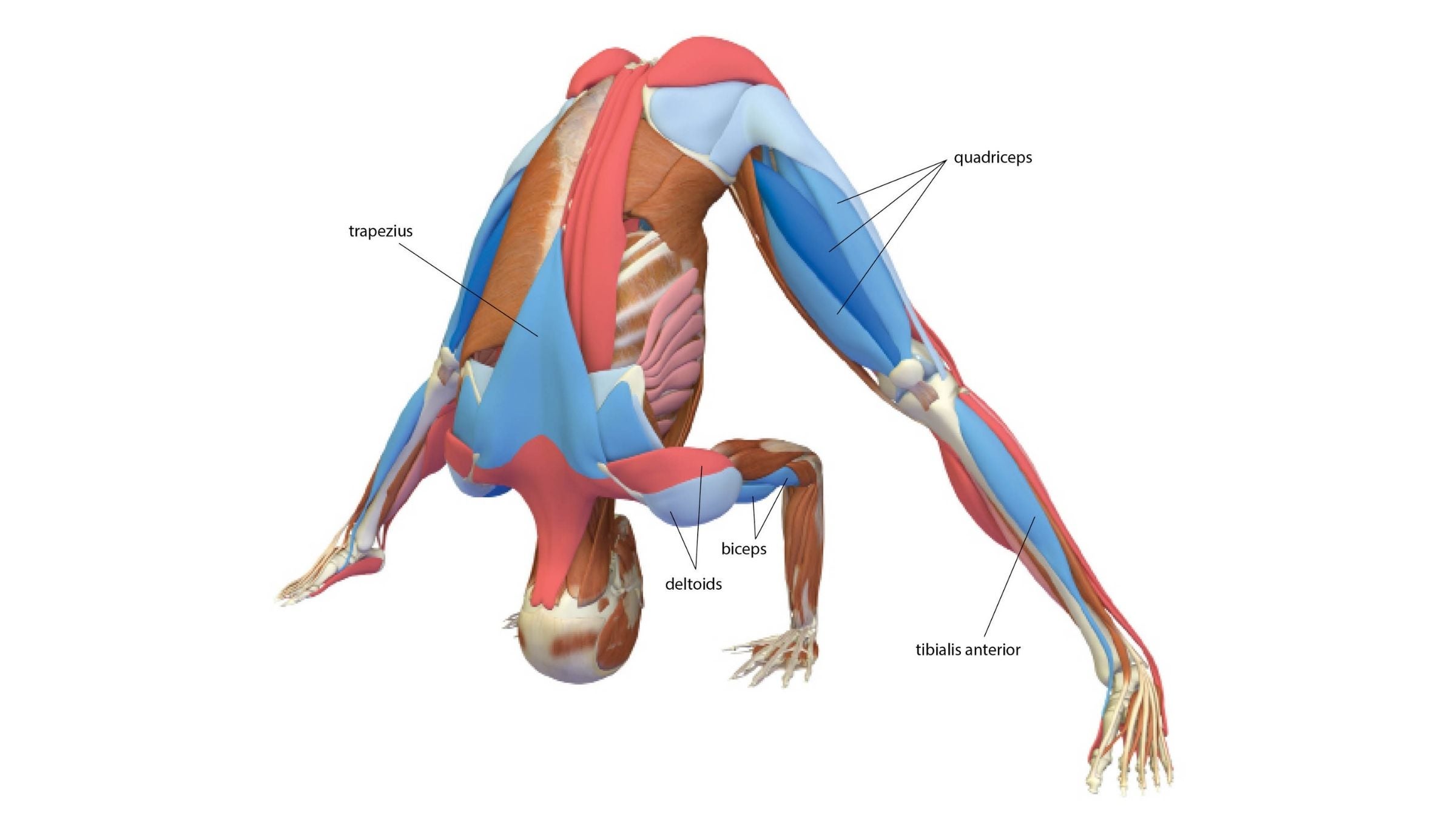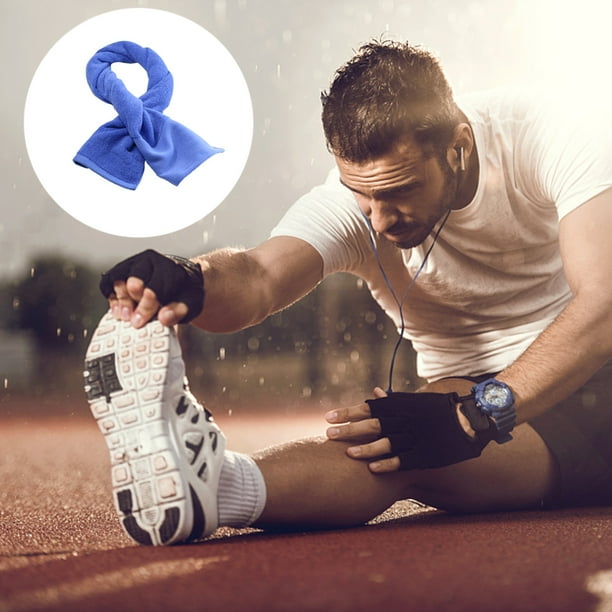One of the simplest ways to Apply Prasarita Padottanasana
“], “filter”: { “nextExceptions”: “img, blockquote, div”, “nextContainsExceptions”: “img, blockquote, a.btn, a.o-button”} }”>
Heading out the door? Study this textual content on the model new Outdoor+ app accessible now on iOS items for members!
>”,”title”:”in-content-cta”,”kind”:”hyperlink”}}”>Receive the app.
Assemble Prasarita Padottanasana (In depth-Legged Standing Forward Bend) on a delicate foundation. Take into account your toes as having 4 corners: your inside and outer heels, large toe mounds, and pinkie toe mounds. Press into all 4 corners whereas increase your inside and outer arches. This increase will journey upward, firming the entire measurement of your legs and grounding your toes into the earth. If in case you might have tight hamstrings or hips, bend your knees barely to ease the stretch with the intention to protect your low once more prolonged and fold forward out of your hip joints.
Because of your head is launched lower than your coronary coronary heart, In depth-Legged Standing Forward Bend pose can perform a substitute for Sirsasana (Headstand) for these with neck factors, says yoga coach Richard Rosen, “Many benefits of inversions—notably bathing the poor earlier drained thoughts with freshly oxygenated blood to perk it up—accrue to Prasarita with none weight-bearing stress on the neck.”
Half divider
Sanskrit
Prasarita Padottanasana (pra-sa-REE-tah pah-doh-tahn-AHS-anna)
prasarita = stretched out, expanded, unfold
on = foot
ut = intense
tan = to stretch or delay
Half divider
In depth-Legged Standing Forward Bend fundamentals
Pose kind: Forward bend
Targets: Lower physique
Benefits: This pose is good for stretching your hamstrings, calves, and hips; strengthening your toes, ankles, and legs; and setting up consciousness of defending your lower once more.
Completely different In depth-Legged Standing Forward Bend perks:
- Counteracts the outcomes of prolonged sitting
- Calms and relaxes the ideas to alleviate anxious concepts and feelings
- Might ease indicators of rigidity problems and premenstrual syndrome (PMS)
Half divider
One of the simplest ways to
- Begin coping with the prolonged side of your mat in Mountain Pose (Tadasana).
- Step your toes 3 to 4 toes apart, alongside along with your arms in your hips.
- Carry tall via your total torso and fold slowly over your legs. Bend out of your hip joints as a substitute of rounding your lower once more. In case your once more begins to spherical, stop folding forward.
- Place your arms flat on the bottom, shoulder-width apart; begin to stretch your torso forward.
- Fold deeper, bringing your head in the direction of the bottom. Anchor your toes, company your leg muscle tissues and activate your inside thigh muscle tissues. Lengthen your entire spine out of your sitting bones to the crown of your head.
- After a variety of breaths, ground into your toes, straighten your arms, and lengthen your spine forward.
- Inhale as you slowly increase as a lot as standing. Step your toes collectively, come into Mountain Pose on the doorway of the mat, and pause.
Half divider
Beginner solutions
- The broader your stance, the less complicated it is to bend forward. However when it’s too intensive, you could possibly actually really feel unstable and start to tip forward.
- Do you have to actually really feel tightness in your low once more or the once more of your legs, bend your knees as rather a lot as wished to hunt out comfort.
In case your arms don’t attain the mat, you can ship them to blocks.
Uncover the pose
There are 4 numerous arm positions you can take contained in the pose, classically distinguished by letters of the alphabet:
- Prasaritta Padotanasana A
Place your arms on the mat beneath your shoulders alongside along with your fingertips constant along with your toes. Bend your elbows and draw them in the direction of one another as in case you occur to have been in Chaturanga Dandasana. Let your neck relax and the best of your head launch in the direction of the mat. - Prasaritta Padotanasana B
Maintain your arms in your hips. Draw your elbows up. - Prasaritta Padotanasana C
Interlace your fingers behind your once more in a bind and lift your knuckles in the direction of the ceiling or attain your arms overhead and lift your knuckles in the direction of the wall in entrance of you. - Prasaritta Padotanasana D
Use the first two fingers on each hand to wrap spherical your large toes as you’d for Padangusthasana (Huge Toe Pose). Bend your elbows and draw them in the direction of one another as in case you occur to have been in Chaturanga Dandasana. Let your neck relax and the best of your head launch in the direction of the mat.
Remember!
- Exit this pose slowly, notably in case you’re weak to dizziness or have low blood stress. Be sure that to take a variety of breaths to return again up slowly out of the pose.
- Breathe deeply on this pose and focus on folding forward with integrity and presence. Consciousness and a highlight in even simple-seeming poses is a key to reaping the benefits of the apply of yoga. Convey that highlight to your knees; if they have a tendency to hyperextend, apply with a slight bend in your knees to keep up your hamstrings engaged.
- Stay away from or modify the pose to be further delicate when you might have a hamstring or groin tear
Half divider
Coach solutions
These cues will help protect your faculty college students from hurt and help them have the proper experience of the pose:
- Not at all strain your self proper right into a forward bend; rounding your torso forward out of your abdomen to get your arms on the bottom is counterproductive.
- Uncover primarily essentially the most relevant stance for you, which is ready to depend on the scale of your legs; shorter people gained’t have as intensive a stance as taller of us might have.
Half divider
Variations
In depth-Legged Forward Bend with arm variations
You presumably can take a variety of fully totally different hand positions in In depth-Legged Forward Bend. Attain out and grasp your toes or the pores and skin edges of your toes. Intertwine your fingers or clasp your arms behind your once more and lift them away out of your physique to create further of a shoulder opener.
In depth-Legged Forward Bend with arms on blocks
In case your hamstrings are tight, place blocks in entrance of you to efficiently increase the bottom to you. Maintain your legs energetic. Remember the fact that yoga is about making skillful picks that may allow you to preserve the alignment of the pose. It’s not about transferring into the deepest doable iteration of the stretch.
In depth-Legged Forward Bend on a chair
Do you have to uncover it troublesome to fold forward alongside along with your arms to the mat or blocks, rest your arms or forearms on the seat of a chair. You presumably can improve the height of the help to you by together with folded blankets or towels beneath your forearms.
Half divider
Why we love this pose
“I’ve on a regular basis relished the feeling of slowly (and I indicate slowly) releasing down into this deep forward fold to let gravity do its issue,” says Erin Skarda, Yoga Journal digital director. “The following stretch via your legs, notably your hamstrings and calves—and your adductors and groin in case you occur to shift from side-to-side—feels oh-so-sweet. Prasarita is one in every of my go-to poses between Zoom conferences. I can breathe proper right here, arms to reverse elbows, and really actually really feel the realm opening in my physique and ideas. It’s the right reset sooner than slowly (slowly!) rising to kind out the rest of my to-do report.”
Half divider
Preparatory and counter poses
Prep with hamstring openers, much like Uttanasana (Standing Forward Bend). Use this pose to open your shoulders and coronary coronary heart to rearrange for any deep coronary coronary heart openers or arm balances.
Preparatory poses
Uttanasana (Standing Forward Bend)
Adho Mukha Svanasana (Downward-Going via Canine)
Counter poses
Tadasana (Mountain Pose)
Utkatasana (Chair Pose)
Garudasana (Eagle Pose)
Baddha Konasana (Certain Angle Pose)
Balasana (Teenager’s Pose)
Half divider
Anatomy
Prasarita Padottanasana is a forward fold that will also be an inversion, explains Ray Prolonged, MD, a board-certified orthopedic surgeon and yoga coach, as a result of it places the head beneath the middle. The principle focus of the stretch is the hamstrings and gastrocnemius and soleus difficult extending into the erector spinae and quadratus lumborum muscle tissues of the once more.
When you flex forward, you draw the ischial tuberosities (the distinctive of the hamstrings) upwards. Contract the quadriceps to help your hamstrings launch. Squeeze the abdominals to activate the rectus abdominus. Contracting these muscle tissues creates reciprocal inhibition of the gluteus maximus, quadratus lumborum, and erector spinae muscle tissues, allowing them to relax into the stretch.
Throughout the drawings beneath, pink muscle tissues are stretching and blue muscle tissues are contracting. The shade of the color represents the strain of the stretch and the strain of contraction. Darker = stronger.

This pose stretches the entire once more physique, along with the hamstringsthe gastrocnemius and soleus difficult, an superior chief, gluteus maximus, sq. loinsand spine erector muscle tissues. Carry the arches of your toes by activating the tibial anterior and posterior. Stability inversion of the ankles with a slight eversion strain by pressing the balls of your toes into the mat. This work together the peroneus longus and brevis muscle tissues on the outside of the lower legs to stabilize your ankles.
In Prasarita Padottanasana D (as throughout the illustration above), press the palms into the mat and rotate them externally. This prompts the infraspinatus and teres minor muscle tissues of the rotator cuff. Draw your shoulders away out of your ears using the lower third of the trapezius. Phrase how these two actions open your chest and deepen the flexion of your trunk.
Excerpted with permission from The Key Poses of Yoga and Anatomy for Vinyasa and Standing Poses by Ray Prolonged.
Put In depth-Legged Standing Forward Bend into apply
In a position to put this forward bend into apply? Listed below are a few flows to attempt:
10 Grounding Poses to Stability Your Vata Dosha This Fall
A Calming Yoga Sequence to Help You Sluggish Down
6 Yoga Poses for People Who Sit All Day
Half divider
About our contributors
Coach and model Natasha Rizopoulos is a senior coach at Down Beneath Yoga in Boston, the place she gives programs and leads 200- and 300-hour coach trainings. A loyal Ashtanga practitioner for a number of years, she grew to turn into equally as captivated by the precision of the Iyengar system. These two traditions inform her educating and her dynamic, anatomy-based vinyasa system Align Your Motion. For further information, go to natasharizopoulos.com.
Ray Prolonged is an orthopedic surgeon and the founding father of Bandha Yoga, a most well-liked sequence of yoga anatomy books, and the Every day Bandha, which presents solutions and techniques for educating and dealing in the direction of safe alignment. Ray graduated from the School of Michigan Medical School and pursued post-graduate teaching at Cornell School, McGill School, the School of Montreal, and the Florida Orthopedic Institute. He has studied hatha yoga for over 20 years, teaching extensively with B.Okay.S. Iyengar and totally different important yoga masters, and teaches anatomy workshops at yoga studios throughout the nation.






